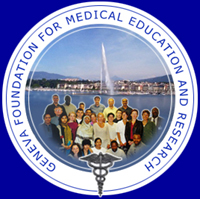The Herbal and Folk Medicine in the context of the Higher Medical Education
La Medicina Natural y Tradicional en el contexto de la Educación Médica Superior
In the regulations of the Economic and Social Policy of the Party and the Cuban Revolution approved in the year 2011, the regulation 158 "to pay the maximum attention to the development of the Herbal and FolkMedicine"1. No doubts, this decision has given a new impulse to the public health program in Cuba and it has been present in all the analyses made to guarantee the training and formation of human resources in this specialty.
Important antecedents exist on the topic. The Ministry of Public health regulation 182/19952, approved and gave legal course to the specialty named Herbal and Folk Medicine. On the other hand, in the undergraduate curriculum, the subject comprehensive General Medicine II of the fifth year of the Medicine career had an increment in the number of hours for the contents of Herbal and Folk Medicine (HFM) that were included since the academic year 1997-1998, and it also constitutes a curricular strategy in the careers of the medical sciences at present3.
In regard to the process of integration of HFM to medical teaching and to the Cuban medical practice, Appelbaum et al4 in 2008 concluded in an article on the topic that: "… potentially there is a lot to learn from the Cuban experience to inform to the educators and health institutions of the United States of America in regard to the efforts to carry out the recommendations of The Institute of Medicine's Academy of Science on the incorporation of the Complementary and Alternative Medicine inside the curriculum of the medical schools." However, in spite of such praises, it is still a long way to go, that's why it was decided to define a regulation of the health branch in function of the development of this type of medicine in Cuba. Some people may ask these questions: is it only a political command? What happens in the rest of the world?
At present, the statistics evidence that the Primary Health Care depends on the Folk Medicine (FM) for 90 % of the population from Ethiopia and 60 % in Tanzania or Uganda, at the same time in developed countries as Germany and Canada 80 % and 70 % of their populations, respectively use these therapeutic resources at least once in a lifetime5,6. On the other hand, the number of member states of the World Health Organization (WHO) with policies on FM ascended to 25 in 1999 to 69 in 2012, while in the same period it increased from 65 to 119 the figure of those with regulations for herbal products. According to this international organism, 73 countries have national institutes of investigation on FM, and in 39 the university formation of FM is implemented. However, it is still recognized as a difficulty the lack of formation and training in the FM suppliers' of services and products of the member states5.
Taking into account what was previously exposed, then it is very favorable the inclusion of the HFM inside the standards of the basic medical education of the World Federation for the Medical Education (WFME)7. Specifically the standard 2.6 states that "The Medicine Faculty should describe the content, extension and sequence of the courses and other curricular activities, including the balance between the core content and the optional one, the role of health promotion, preventive medicine and rehabilitation, as well as the relationship with the folk or alternative practices."
According to the international context, the Cuban decision in regard to the HFM seems not to be remote from the world tendencies. At present there is a strong position in favor of an Integrative Medicine, it is understood by the combination of the HFM and the conventional medical treatments, taking advantage of both benefits in favor of the patient.
At present, in Cuba, the medical university maintains the HFM as a curricular strategy of the different careers, at the same time that it will integrate these contents as proper courses in the Plan D of the Medicine career starting in the academic year 2016-2017. In postgraduate courses the development of the specialty continues with an updated formation program starting in the current academic year, there were 160 specialists and 110 residents in the country by the end of the year 20148. In the same way, different specialties integrate the HFM, mainly those that are basic for the system: the Comprehensive General Medicine and the Comprehensive General Odontoloy.
Then, it could be said that the HFM has achieved a development in the medical teaching in Cuba, but there are still threats and weaknesses that potentially block the sustainability of these results. To achieve an appropriate training of the teaching staff, to develop investigations that contribute to enrich the evidences of the use of these therapeutic modalities and to integrate them in the daily medical practice, these are required elements that may allow the visibility of the HFM to guarantee an appropriate formation through the in-service training.
It is not only needed the intrinsic development of the specialty, but also its integration with the rest of the medical specialties. Of course, such challenges will be able to be overcome for sure, beyond, the "non critical enthusiasm" and of the "non informed skepticism". Obviously, in that determination, Science must be the light.
MD. Johann Perdomo Delgado.
Head of the National Herbal and Folk Medicine Group.
REFERENCIAS BIBLIOGRÁFICAS
1. Partido Comunista de Cuba. VI Congreso. Lineamientos de la Política Económica y Social del Partido y la Revolución. Lineamiento No. 158. La Habana: PCC; 2011.
2. Ministerio de Salud Pública. Resolución Ministerial 182/95. La Habana: MINSAP; 1995.
3. Miralles Aguilera EA, Taureaux Díaz N, Fernández Sacasas JA, Pernas Gómez M, Sierra Figueredo S, Diego Cobelo JM. Cronología de los mapas curriculares en la carrera de Medicina. Educ Med Super [Internet]. 2015 [citado 23 Nov 2015];29(1):93-107. Disponible en: http://scielo.sld.cu/scielo.php?script=sci_arttext&pid=S0864-21412015000100010&lng=es
4. Appelbaum D, Kliger B, Barret B, Frenkel M, Guerrera MP, Kondwani KA, Lee BB, Tattelman E. Natural and Traditional Medicine in Cuba: Lessons For U.S. Medical Education. MEDICC Review. 2008;10(1):43-48.
5. Organización Mundial de la Salud. Estrategia de la OMS sobre medicina tradicional 2014-2023. Ginebra: Organización Mundial de la Salud; 2013.
6. Robison MM, Xiaorui Z. The world medicines situation 2011. Traditional Medicines: global situation, issues and challenges. Geneve: World Health Organization; 2011.
7. World Federation for Medical Education. Educación Médica Básica. Estándares globales de la WFME para la mejora de la calidad. Educación Médica. 2004;7(supl. 2):7-18.
8. Ministerio de Salud Pública. Anuario Estadístico 2014. La Habana: Ministerio de Salud Pública; 2015.
Submitted: December, 18 2015.
Accepted: January, 27 2016.
MD. Johann Perdomo Delgado. Ministry of Public Health. Havana. Cuba.
E-mail: tradicional@msp.sld.cu
Copyright (c) 2016 EDUMECENTRO










